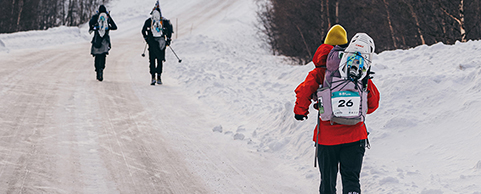Hiking Boot Care



Maintaining your hiking boots is important for ensuring that their lifespan isn't severely curtailed. Here's how to look after them. Whether boots are made from leather or fabric they come with water repelling treatments. It is necessary to maintain these treatments to get the best possible performance from your footwear.
The four rules of boot care are:
- Clean and dry after each trip
- Treat with a suitable waterproofing compound
- Store in a dry place.
- Wear your boots regularly.
Cleaning your boots
All boots should be cleaned after each trip. Wipe off all mud or dust using a damp rag or scrubbing brush and water. Eyelets should be carefully cleaned both inside and outside to minimise rust. An old toothbrush is handy for getting inside the boot and into difficult corners and cracks. If your boots are particularly soiled remove the laces so you can clean around the tongue more effectively. Wash you laces separately. Remove the footbed from the boot so as to remove any dirt or sand that has got under the insole. It is a good idea to periodically clean boots with a specialised cleaner such as Nikwax Footwear Cleaning Gel. Do not use ordinary soaps or detergents for this as they will strip the DWR (Durable water repellent) treatment from the boot.
Drying your boots
Allow boots to air-dry in a well-ventilated warm place. Near a ducted heating duct is ideal in winter. In summer teperatures are sufficient that boots will dry outside in a dry shady spot. Do NOT dry boots in hot sun or near heaters or fires. If the boots are particularly wet on the inside remove the footbed from the boot and stuff with absorbent paper such as newspaper. Remove after an hour or so and repeat if necessary.
Treatment
The boots should then be treated before storage. If your leather footwear has been soaked and you do not treat it the leather will dry out and harden and eventually crack. Are your boots like this? Then see below*
For leather boots, we recommend treating them with Nikwax Wax for Leather or other specialised leather waterproofing products. Work this all over the leather with a rag or your finger. There is something therapeutic about working boot wax into leather. Pay particular attention to the area at the base of the laces and over the top of the toes. It is recommended to remove the laces before treatment. If the boots have a leather lining, wipe a light coat onto the lining to preserve the leather. The wax helps inhibit rust on metal lacing rings.
For fabric/Gore-Tex® boots. These boots are best treated with Nikwax Fabric-Leather Proof. This is a water-based proofing and is preferably applied when the footwear is damp after cleaning. This treatment combines the maximum waterproofing with the minimum visual effect on the boot.
*What do I do if my leather has dried out or is in poor condition?
In this case the best product to use is Nikwax Conditioner for Leather rather than the standard wax. This nourishes and softens the leather. This product can also be used on new leather boots to help soften the leather and break them in, but once broken in the standard wax is a more appropriate product to use.
Wear your boots regularly
Most modern hiking boots and shoes are made with composite soles that contain layers of various shock absorbing materials such as EVA or polyurethane (PU). PU is a superb material for shock absorption and this is why it is so widely used. However footwear using this material can be subject to a process called hydrolysis. This is an isolated problem that can be mitigated by proper care and maintenance.
What Is Hydrolysis?
Hydrolysis is a chemical reaction that occurs between PU and moisture. Over time it causes a physical breakdown of the PU material until it crumbles away. Factors that increase the likelihood of hydrolysis are humidity and warmth so it is more of a problem in tropical environments or if boots are put away in enclosed spaces without being completely dry.
Most importantly the material in the sole needs to be “worked” from time to time by wearing the footwear. This keeps the material “active” and prevents deterioration. A good comparison is what happens to bicycle tyres if you just hang your bike up in the garage and come back a couple of years later to find the rubber all perished.
You need to wear your boots on a regular basis, even if it is just for a walk down to the shops to activate the soles. We recommend at least once every 6 months.
Deterioration of boot soles due to hydrolysis after a number of years is not a warranty issue. We find that by far the majority of boots returned to us with this problem are where the owner has purchased the boots for a trip, then put them away in the cupboard for years. When the boots are taken out, “hardly used”, the midsole suddenly disintegrates. USE IT OR LOSE IT is an appropriate saying. We seldom find this problem in regularly used footwear.
See our range of Nikwax products.
Questions? Visit us, email us or call us (03 9600 0599).
More Articles
- HOW TO LOOK AFTER YOUR SLEEPING MAT
- LIGHTWEIGHT BUSHWALKING: HOW TO
- SLEEPING BAGS: HOW TO CHOOSE
- MORE RESOURCES...


















